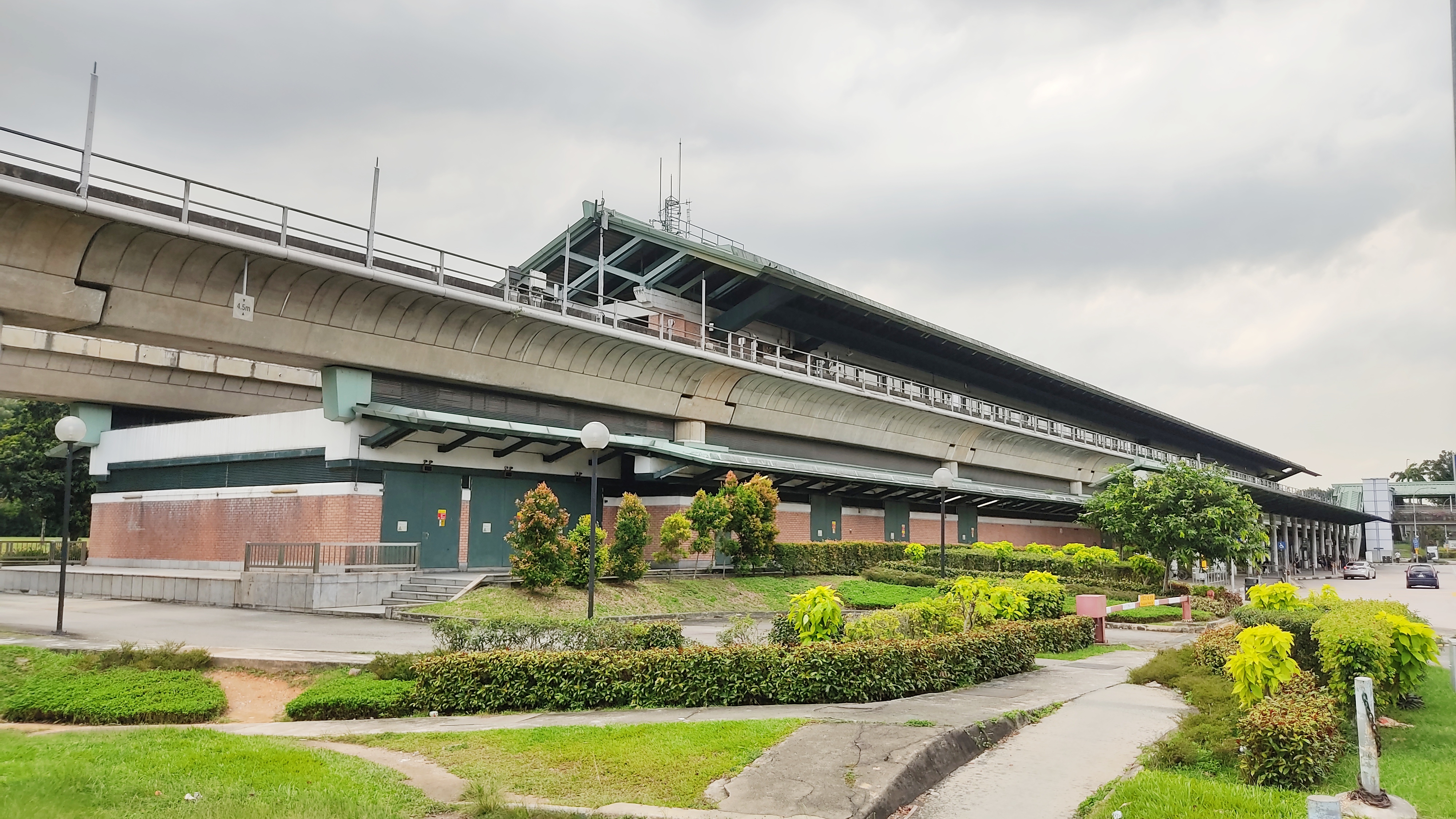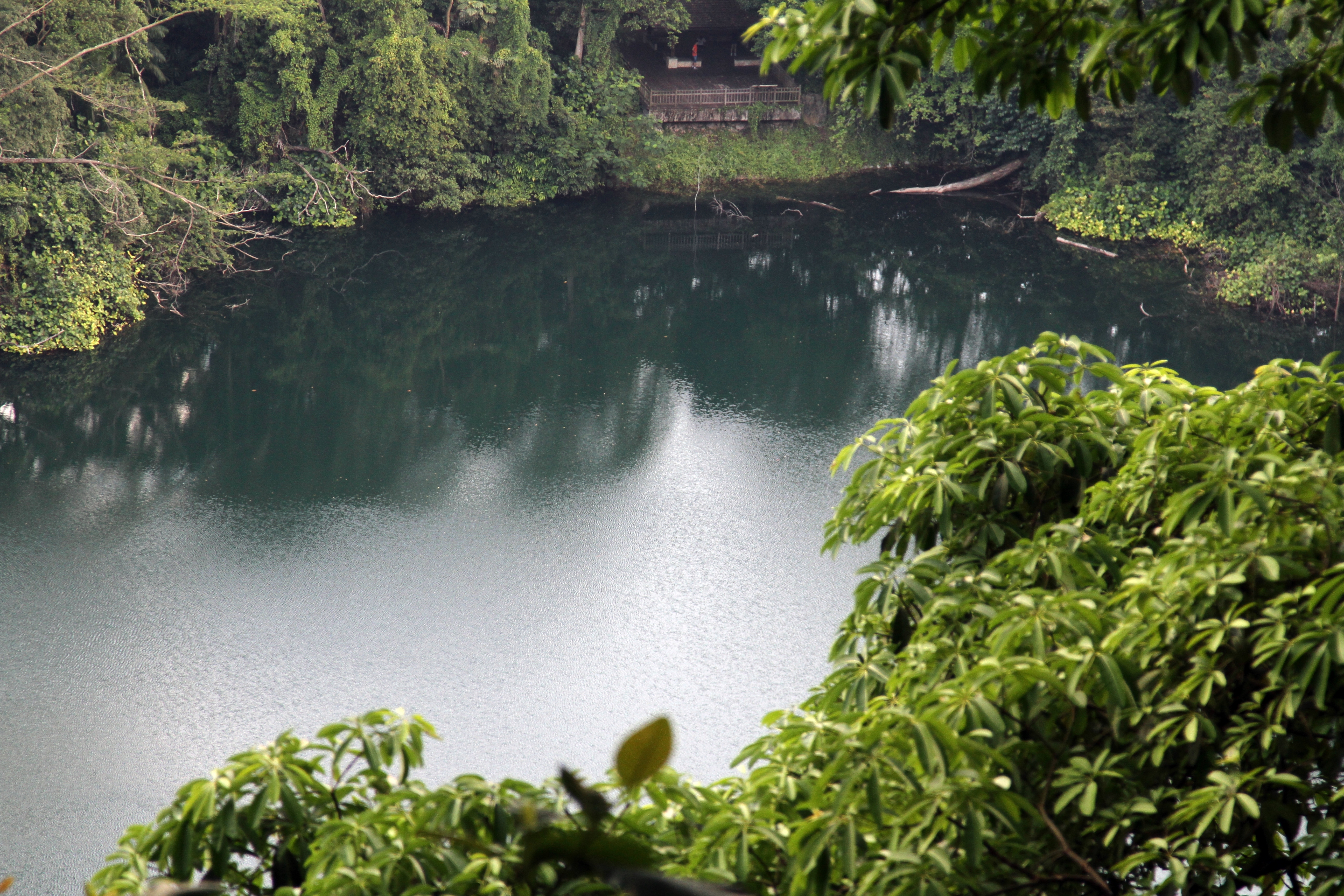|
Kranji Marshes
The Kranji Marshes is a nature reserve in the northwest area of Singapore. Background A freshwater marshland, derived from the damming of the Kranji River to form the Kranji Reservoir Kranji Reservoir (Chinese: 克兰芝蓄水池; ) is a reservoir in the northern part of Singapore, near the Straits of Johor. It was a former freshwater river that flowed out into the sea that was dammed at its mouth to form a freshwater reservo ..., became seen as an important habitat. Nature Society Singapore (NSS) drafted a proposal highlighting its conservation value in 1990. This was accepted and included in the government Singapore Green Plan 1993. The 54-hectare site includes woodland and wetlands. NSS adopted the stretch of wetlands in 2008 and supported by sponsorship carried out a restoration program in cooperation with PUB and NParks. It was in 2005 that the area was recategorised as a park and named "Kranji Marshes Park". The parkland was opened to the public on 1 February 2016. The ... [...More Info...] [...Related Items...] OR: [Wikipedia] [Google] [Baidu] |
Nature Reserve
A nature reserve (also known as a wildlife refuge, wildlife sanctuary, biosphere reserve or bioreserve, natural or nature preserve, or nature conservation area) is a protected area of importance for flora, fauna, or features of geological or other special interest, which is reserved and managed for purposes of conservation and to provide special opportunities for study or research. They may be designated by government institutions in some countries, or by private landowners, such as charities and research institutions. Nature reserves fall into different IUCN categories depending on the level of protection afforded by local laws. Normally it is more strictly protected than a nature park. Various jurisdictions may use other terminology, such as ecological protection area or private protected area in legislation and in official titles of the reserves. History Cultural practices that roughly equate to the establishment and maintenance of reserved areas for animals date bac ... [...More Info...] [...Related Items...] OR: [Wikipedia] [Google] [Baidu] |
Singapore
Singapore (), officially the Republic of Singapore, is a sovereign island country and city-state in maritime Southeast Asia. It lies about one degree of latitude () north of the equator, off the southern tip of the Malay Peninsula, bordering the Strait of Malacca to the west, the Singapore Strait to the south, the South China Sea to the east, and the Straits of Johor to the north. The country's territory is composed of one main island, 63 satellite islands and islets, and one outlying islet; the combined area of these has increased by 25% since the country's independence as a result of extensive land reclamation projects. It has the third highest population density in the world. With a multicultural population and recognising the need to respect cultural identities of the major ethnic groups within the nation, Singapore has four official languages: English, Malay, Mandarin, and Tamil. English is the lingua franca and numerous public services are available only in Eng ... [...More Info...] [...Related Items...] OR: [Wikipedia] [Google] [Baidu] |
Kranji Marshes 06
Kranji is a suburb in northwestern Singapore, bounded by Sungei Kadut to the north, Turf Club to the east, as well as Lim Chu Kang and the Western Water Catchment to the west. It is located about from the city centre and it came from Malay word "Buah Keranji" due to pronunciation by local Malay, it became "Kranji". Etymology Kranji is named after a local tree, ''pokok'' ''kranji'' or ''keranji'' (Malay for ''Dialium indum'', velvet tamarind tree). History Kranji served as a military camp before the Japanese invasion of Singapore in 1942, and is now the home of the Kranji War Cemetery and Kranji War Memorial, commemorating the 30,000 Commonwealth personnel who died in Singapore, Malaya, Java and Sumatra during World War II. In addition, it is now a prime residential area comprising mostly stand-alone properties. There are no towering apartment blocks, unlike most suburbs of Singapore. It is also an industrial area. Highlights The Singapore Turf Club operates Kranji Racecourse, ... [...More Info...] [...Related Items...] OR: [Wikipedia] [Google] [Baidu] |
Kranji Reservoir
Kranji Reservoir (Chinese: 克兰芝蓄水池; ) is a reservoir in the northern part of Singapore, near the Straits of Johor. It was a former freshwater river that flowed out into the sea that was dammed at its mouth to form a freshwater reservoir. It can also be classified as an estuary. The dam has a road bridging the two banks, and now prevents the sea from coming in, and is home to a marsh. The former Kranji River has three main tributaries - Sungei Peng Siang, Sungei Kangkar and Sungei Tengah. Historical Significance Although known as a place for fishing and picnicking, the Kranji Reservoir Park is a historical site. A war memorial plaque tells visitors of the historical and violent past of this place. It was here that the Battle of Kranji took place. The Japanese army invaded Kranji in their plan to take Singapore during the Second World War. Kranji Reservoir Park In 1985 it became permissible to fish in the Kranji Reservoir Park. The Park now has two fishing areas, named ... [...More Info...] [...Related Items...] OR: [Wikipedia] [Google] [Baidu] |
Nature Society (Singapore)
The Nature Society (Singapore) (NSS) is a non-government, non-profit organisation centered towards the preservation and appreciation of Singapore's natural heritage, as well as that of the surrounding region. Run by volunteers, the NSS depends financially on its members' contributions as well as companies, institutions and individuals. History NSS has its origin in 1940 when a handful of colonial civil servants got together to form the Malayan Nature Society (MNS). Its activities were mainly educational - organising talks by visiting scientists, conducting nature walks, etc. Headquartered in today's Malaysia, the Singapore group became known as the Malayan Nature Society (Singapore Branch). It had its headquarters in the National University of Singapore as most office holders were from the then Departments of Botany and Zoology, now merged into the Department of Biological Sciences. As such, there were always close collaborations with academics, who had the necessary scientific ... [...More Info...] [...Related Items...] OR: [Wikipedia] [Google] [Baidu] |
Kranji MRT Station
Kranji MRT station is an elevated Mass Rapid Transit (MRT) station on the North South line (NSL). Situated in Sungei Kadut, Singapore along Woodlands Road, it serves the Singapore Turf Club and the Woodlands Wafer Fabrication Park. The station is operated by SMRT Trains. Originally not part of the Woodlands MRT extension plans, Kranji station was later included in November 1992. Completed along with the other Woodlands extension stations on 10 February 1996, it is the largest among the stations, designed to handle a large volume of visitors to the Singapore Turf Club. Designed with a kampung-style roof, the station is integrated with other transportation modes and serves cross-border bus services to Johor Bahru. History After the Branch line (from the Jurong East to Choa Chu Kang stations) opened in 1990, the Woodlands MRT line was envisioned so as to connect between Yishun and Choa Chu Kang stations. Initially not part of the first four stations announced for the extensio ... [...More Info...] [...Related Items...] OR: [Wikipedia] [Google] [Baidu] |
Wetlands Of Singapore
A wetland is a distinct ecosystem that is flooded or saturated by water, either permanently (for years or decades) or seasonally (for weeks or months). Flooding results in oxygen-free (anoxic) processes prevailing, especially in the soils. The primary factor that distinguishes wetlands from terrestrial land forms or Body of water, water bodies is the characteristic vegetation of aquatic plants, adapted to the unique anoxic hydric soils. Wetlands are considered among the most biologically diverse of all ecosystems, serving as home to a wide range of plant and animal species. Methods for assessing wetland functions, wetland ecological health, and general wetland condition have been developed for many regions of the world. These methods have contributed to wetland conservation partly by raising public awareness of the functions some wetlands provide. Wetlands occur naturally on every continent. The water in wetlands is either freshwater, brackish or saltwater. The main wetland type ... [...More Info...] [...Related Items...] OR: [Wikipedia] [Google] [Baidu] |
Nature Reserves In Singapore
The Singaporean government has established four nature reserves in Singapore. They are the Bukit Timah Nature Reserve, Central Catchment Nature Reserve, Labrador Nature Reserve, and Sungei Buloh Wetland Reserve. History One of the first notions of nature reserves in Singapore was thought up by the then-Singapore Botanical Gardens Superintendent N. C. Cantley who, in 1882, proposed that select areas of land be preserved. In as early as 1883, the Bukit Timah Nature Reserve (as it is now known) was established, making it the inaugural nature reserve in Singapore. The Singapore Nature Reserves Act officially came into action in 1971. In 1984, nature reserves took up some of the country's land. This figure has been increased to , as of 2009. Biosphere reserves The Public Utilities Board-maintained Central Catchment Nature Reserve is Singapore's largest nature reserve. The Sungei Buloh Wetland Reserve aids in the conservation of both bird species and mangrove plants. The Bukit Tim ... [...More Info...] [...Related Items...] OR: [Wikipedia] [Google] [Baidu] |
Parks In Singapore
A park is an area of natural, semi-natural or planted space set aside for human enjoyment and recreation or for the protection of wildlife or natural habitats. Urban parks are green spaces set aside for recreation inside towns and cities. National parks and country parks are green spaces used for recreation in the countryside. State parks and provincial parks are administered by sub-national government states and agencies. Parks may consist of grassy areas, rocks, soil and trees, but may also contain buildings and other artifacts such as monuments, fountains or playground structures. Many parks have fields for playing sports such as baseball and football, and paved areas for games such as basketball. Many parks have trails for walking, biking and other activities. Some parks are built adjacent to bodies of water or watercourses and may comprise a beach or boat dock area. Urban parks often have benches for sitting and may contain picnic tables and barbecue grills. The largest ... [...More Info...] [...Related Items...] OR: [Wikipedia] [Google] [Baidu] |






